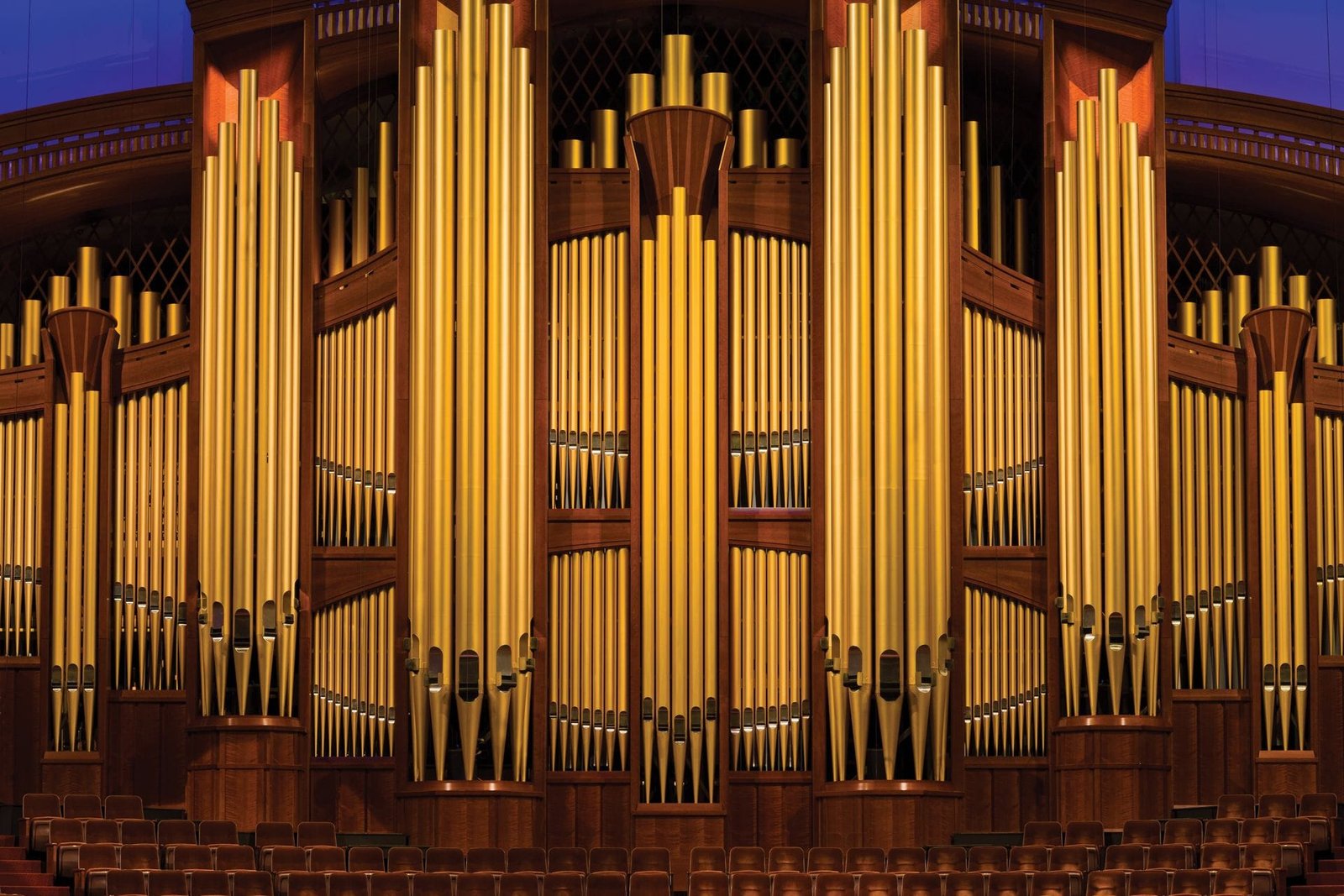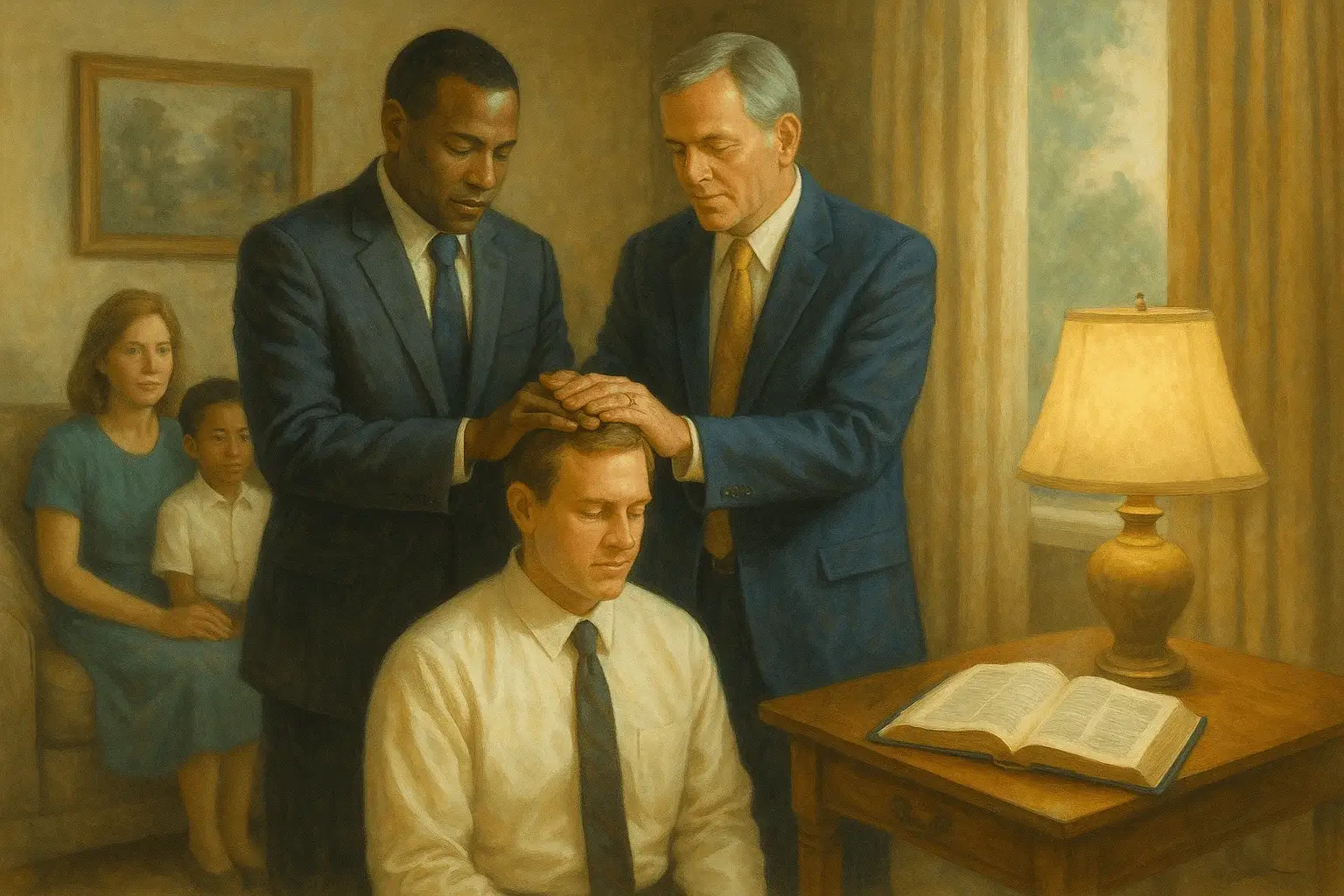Music plays an important role in our worship of Jesus Christ. The Church of Jesus Christ of Latter-day Saints uses and emphasizes music in many contexts. As disciples of Christ striving to live his gospel, we can use music to draw closer to the Savior and increase our discipleship.
The Savior loves music
A short and fairly oblique reference to music in the scriptures shows us just how deeply the Savior loves music. During the last hours of his mortal life, he performed the atonement, in which he “suffered these things for all, that they might not suffer if they would repent; But if they would not repent they must suffer even as I; Which suffering caused myself, even God, the greatest of all, to tremble because of pain, and to bleed at every pore, and to suffer both body and spirit—and would that I might not drink the bitter cup, and shrink.”1
Before this experience that saved us all, but which also caused him so much pain, the Savior sang a hymn:
“And when they had sung an hymn, they went out into the mount of Olives.”2
This short verse teaches us that the last thing the Savior did before performing the atonement was to sing a hymn with his disciples. I believe that this helped him feel peace and calm before experiencing the greatest pain anyone has ever experienced. Music has the power to bring us peace. The Savior knew that, and he accessed that power before performing the atonement.
Music is a vital part of our meetings
Just a few months after the organization of the Church, the Lord gave a revelation to Joseph Smith in which he instructed Joseph’s wife, Emma, to create a collection of hymns: “And it shall be given thee, also, to make a selection of sacred hymns, as it shall be given thee, which is pleasing unto me, to be had in my church. For my soul delighteth in the song of the heart; yea, the song of the righteous is a prayer unto me, and it shall be answered with a blessing upon their heads.”3
This instruction to Emma is significant in many ways. Not only did the Lord teach that the “song of the righteous is a prayer” unto him, but we also learn that the hymns used in our meetings are to be chosen by revelation.4 With that knowledge, we can be confident that the hymns published by the Church will help us draw closer to Christ.
In our sacrament meetings, we are instructed to sing a hymn before partaking of the sacrament:
“Sacred music is a vital part of sacrament meeting and other Church meetings. . . . The sacrament hymn should refer to the sacrament itself or to the sacrifice of the Savior.”5 This helps us reflect on the Savior and his atonement, feel more strongly the Holy Ghost, and be unified with the members of our ward. President Dallin H. Oaks commented, “How wonderful when every person in attendance joins in the worship of singing—especially in the hymn that helps us prepare to partake of the sacrament.”6
We are encouraged to use music
The General Handbook has an entire chapter on music. It teaches, “Sacred music increases faith in Jesus Christ. It invites the Spirit and teaches doctrine. It also creates a feeling of reverence, unifies members, and provides a way to worship Heavenly Father and Jesus Christ.”7
The Handbook teaches us about the purpose and power of music, how to better use music in our homes, and gives us guidance on how we should be using music in our church meetings. (See the General Handbook, Chapter 19). If we will study this chapter, we can learn how to better use sacred music in all aspects of our worship.
Prophets and apostles encourage us to use music
Talks that reference music sometimes talk directly about music, while others use music to help us understand abstract concepts.
Music as an analogy
There are many talks that use music as an analogy to help us understand difficult or abstract concepts. I see this is as symbolic for what music does for us. In other words, using music as an analogy can explain challenging concepts, and music itself helps us to express thoughts or feelings that can be difficult to put into words.
In the Book of Mormon, the prophet Alma asks, “Have you felt to sing the song of redeeming love.”8 I understand this as asking whether we feel the joy that comes from experiencing that mighty change of heart.
Elder Jeffrey R. Holland used a line from the hymn “There Is Sunshine in My Soul Today” and various music references to encourage us and give us hope through our sorrows. He said, “If for a time you are unable to echo the joyous melodies you hear coming from others, I ask you to hold tenaciously to the line in this hymn that reassures, ‘Jesus listening can hear the songs [you] cannot sing.'”9
Elder Deiter F. Uchtdorf compared music to hearing the voice of the Spirit: “‘Can I hear the music of the Spirit?’ Can we hear the gentle call of our beloved Savior, who invites us to come and follow Him? Do we hear His voice? Or is life too rushed? Too busy or burdened? Too filled with the thousand daily things that demand our attention? My beloved brothers and sisters, my dear friends, I testify that our loving Father in Heaven is reaching out to you. The Savior is speaking to you: ‘Come, follow me.’ In every hour of the day and throughout the night, He communicates through the divine music of the Spirit. Can you hear it?”10
President Russell M. Nelson used the hymn “Let Us All Press On” to “summarize our renewed resolve, our challenge, and our charge going forward: Let us all press on in the work of the Lord.”11
These messages show how music can be used to explain or teach concepts that might otherwise be difficult to put into words, or that make it easier for a broader audience to understand.
Teachings about music
There are also talks in which prophets and apostles directly address the sacred power and influence of music.
Elder D. Todd Christofferson recently dedicated the new Music Building at Brigham Young University. At the dedication, he said that the significant investment into the music program at BYU “attests to the value that Brigham Young University and The Church of Jesus Christ of Latter-day Saints attach to music and its vast potential for good in society and for the blessing of the human soul.”12
President Dallin H. Oaks has emphasized the power of music: “The singing of hymns is one of the best ways to put ourselves in tune with the Spirit of the Lord. I wonder if we are making enough use of this heaven-sent resource in our meetings, in our classes, and in our homes.”13
“Sacred music has a unique capacity to communicate our feelings of love for the Lord. This kind of communication is a wonderful aid to our worship. Many have difficulty expressing worshipful feelings in words, but all can join in communicating such feelings through the inspired words of our hymns.”14
President Russell M. Nelson taught, “Prophets through all generations have taught the importance of worthy music in our expressions of worship.”15
“Remember, music has power to provide spiritual nourishment. It has healing power. It has power to facilitate worship; it allows us to contemplate the Atonement and the Restoration of the gospel with its saving principles and exalting ordinances. Music provides power for us to express prayerful thoughts and bear testimony of sacred truths.”16
Music leads to unity
Music has a spiritual power that connects us to heaven. That power manifests with a direct, measurable impact on our bodies. There are many studies that empirically demonstrate the power that music has over our physical bodies. But one significant study teaches us how singing together can create unity.
A 2013 study showed that the hearts of choir members literally beat in unison as they sing together: “Choir singing is known to promote wellbeing. One reason for this may be that singing demands a slower than normal respiration, which may in turn affect heart activity. . . . Unison singing of regular song structures makes the hearts of the singers accelerate and decelerate simultaneously.”17 As choir members sing together and their heart rates begin to sync, it literally sends “relaxing waves through the choir.” This experience creates “joint perspectives” among those involved in “collective singing,” thereby creating “bonding in the deepest sense.”
We don’t have to imagine the power that hymn singing can have on a congregation. It is scientifically established that those who sing together become more unified.
The Church provides significant music resources
Because of its importance, in this digital era the Church has provided us with a significant number of resources that we can use to listen to uplifting music.
The Music Library is the basic landing page for all the Church’s music resources. (music.churchofjesuschrist.org)
Youth and Contemporary music can be downloaded from the Music Library site, or from the Church’s youth web page. (Youth Music Collection).
The Keyboard Course Book provides instructions for those who would like to learn or improve their ability to play the piano or organ.
The Tabernacle Choir at Temple Square has a YouTube channel to watch or listen to Music and the Spoken Word, or individual songs and videos.
The Church’s Sacred Music App gives access to sheet music and records for hymns and other sacred music, including the youth music.
Using these and other resources (available on the Church’s webpage for the Music Library, or the Sacred Music App), we can incorporate more sacred music into our lives.
Sacred music can help us come unto Christ
President Russell M. Nelson has said that the secret to a happy life is to “talk of Christ, testify of Christ, have faith in Christ, [] rejoice in Christ . . . and ‘offer your whole [soul]’ to Him.”18 Sacred music helps us in this effort in many ways. President Nelson has taught that sacred music helps us come closer to Christ, “Some of the greatest sermons are preached by the singing of hymns. Hymns move us to repentance and good works, build testimony and faith, comfort the weary, console the mourning, and inspire us to endure to the end.”19
It might take some effort to listen to music that might be different from our normal tastes, and it might take effort to sing during sacrament meeting, but if we will increase our use of sacred music, we will experience a profound positive impact on our ability to feel a connection to our Savior.
References
- Doctrine and Covenants 19:16-18. ↩︎
- Matthew 26:30; Mark 14:26. ↩︎
- Doctrine and Covenants 25:11-12. ↩︎
- “Under the direction of the First Presidency and Quorum of the Twelve Apostles, General Authorities and General Officers were assigned to oversee the hymnbook and Children’s Songbook revision.” Hymns for Home and Church, at https://www.churchofjesuschrist.org/initiative/new-hymns?lang=eng. ↩︎
- General Handbook, “Music,” 19.3, 19.3.2, https://www.churchofjesuschrist.org/study/manual/general-handbook/19-music?lang=eng&id=p57#p57. ↩︎
- Dallin H. Oaks, “Sacrament Meeting and the Sacrament,” October 2008. ↩︎
- General Handbook, “Music,” 19.1, https://www.churchofjesuschrist.org/study/manual/general-handbook/19-music?lang=eng&id=p43#p43. ↩︎
- Alma 5:26. ↩︎
- Jeffrey R. Holland, “Songs Sung and Unsung,” April 2017. ↩︎
- Dieter F. Uchtdorf, “Can You Hear the Music?” BYU Speeches, January 15, 2019. ↩︎
- Russell M. Nelson, “Let Us All Press On,” April 2018. ↩︎
- Tad Walch, “Apostle Dedicates Stunning New BYU Music Building,” Deseret News Online, April 16, 2025, https://www.deseret.com/education/2025/04/16/a-special-gift-apostle-dedicates-stunning-new-byu-music-building/. ↩︎
- Dallin H. Oaks, “Worship through Music,” October 1994. ↩︎
- Oaks, “Worship through Music.” ↩︎
- Russell M. Nelson, “Power and Protection Provided by Worthy Music,” BYU Speeches, May 4, 2008. ↩︎
- Nelson, “Power and Protection Provided by Worthy Music.” ↩︎
- Vickhoff B, Malmgren H, Åström R, Nyberg G, Ekström S-R, Engwall M, Snygg J, Nilsson M and Jörnsten R (2013) Music structure determines heart rate variability of singers. Front. Psychol. 4:334. doi: 10.3389/fpsyg.2013.00334, https://www.frontiersin.org/journals/psychology/articles/10.3389/fpsyg.2013.00334/full. ↩︎
- Russell M. Nelson, “The Lord Jesus Christ Will Come Again,” October 2024 (quoting Omni 1:26). ↩︎
- Russell M. Nelson, “The Power and Protection of Worthy Music,” Ensign, December 2009, 15 (summarizing his devotional address at BYU of the same name, see note 14; quoting the First Presidency Preface in the 1985 Hymnbook). ↩︎



